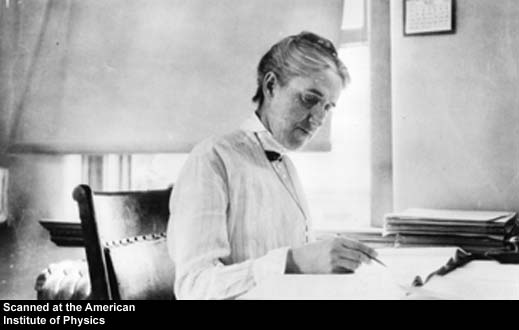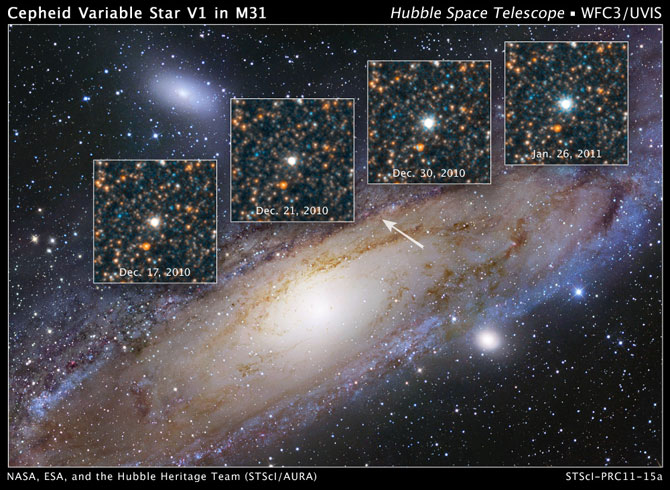 By the late 1800s, astronomy had moved on from simple human observation to the collection of images of the sky on photographic plates — pieces of glass coated with light-sensitive silver salts. At the time they were made, these plates could be analyzed only through tedious, labor-intensive work. A person had to scan and measure and compare stars in the images before their position and brightness could be calculated and discoveries made.
By the late 1800s, astronomy had moved on from simple human observation to the collection of images of the sky on photographic plates — pieces of glass coated with light-sensitive silver salts. At the time they were made, these plates could be analyzed only through tedious, labor-intensive work. A person had to scan and measure and compare stars in the images before their position and brightness could be calculated and discoveries made.
In 1879, Edward Pickering, head of the Harvard College Observatory, began hiring women to do this work. Paid just 25 to 30 cents an hour for their labors, women were cheaper than men, but Pickering found that they were also better than the male scientists who had done the work previously. The women were more detail-oriented and worked harder. (That didn’t mean they were more respected, however. Today this group of women is often called the “Harvard Computers,” but when they were working they were called “Pickering’s Harem.”) One of the computers was Henrietta Snow Leavitt.
Leavitt joined the team as a volunteer in 1895, after studying astronomy at (what would become) Radcliffe College. In 1902, Leavitt became a permanent—and paid—member of the staff and eventually headed up the photographic photometry department.
Leavitt’s job was to identify variable stars, which can change in brightness over hours to weeks. She used a blink comparator to look back and forth between two plates that showed the same spot in space days or weeks apart. A star that had changed in brightness over that time would appear as a blinking spot, and Leavitt identified more than 2,400 variable stars using this method.
 Anyone studying the brightness of stars quickly runs up against a problem—the brightness alone doesn’t give any information about the star. A very bright star from far away looks the same as a dimmer one closer to Earth. But Leavitt eliminated that problem by studying Cepheid variables in the Magellanic Clouds, which are really two tiny galaxies orbiting the Milky Way. She began studying these stars, which are approximately the same distance from Earth whatever their appearance, to determine whether there was a relationship between a variable star’s brightness and the period of its dimming-brightening cycle.
Anyone studying the brightness of stars quickly runs up against a problem—the brightness alone doesn’t give any information about the star. A very bright star from far away looks the same as a dimmer one closer to Earth. But Leavitt eliminated that problem by studying Cepheid variables in the Magellanic Clouds, which are really two tiny galaxies orbiting the Milky Way. She began studying these stars, which are approximately the same distance from Earth whatever their appearance, to determine whether there was a relationship between a variable star’s brightness and the period of its dimming-brightening cycle.
Leavitt identified 1,777 variable stars in the Magellanic Clouds but, due to the difficulty involved in determining the period and maximum and minimum brightnesses for a single star, was able to gather this data for only 25 stars by 1912. But that was enough data for her to find a pattern. When Leavitt plotted these stars’ brightnesses versus their periods on a graph, she found that they were related logarithmically—the brighter the star, the longer its period. (Her study was published in the Harvard College Observatory Circular, dated March 3, 1912, with Pickering as the official author on the paper; he did, however, credit Leavitt for the discovery and the write-up.)
Other astronomers soon realized the value of Leavitt’s discovery. A year later, Danish astronomer Ejnar Hertzsprung determined the distance to several Cepheid variables in the Milky Way, and once this was combined with Leavitt’s data, astronomers could calculate the distance to any Cepheid variable in the sky.
In 1922 and 1923, Edwin Hubble found Cepheid variables in several spiral nebulae and, when he calculated their distances, found they were too far away to be part of the Milky Way and concluded that our galaxy wasn’t the only one in the universe. Leavitt’s finding would also prove to play a key part in Hubble’s later discovery that the universe is expanding.
Hubble recommended that Leavitt be awarded the Nobel Prize in Physics and the head of the Swedish Academy of Sciences began the paperwork for her nomination. That came to a halt, however, when they realized that she had died of cancer in 1921.
After her death, Harlow Shapley, then director of the Harvard College Observatory, wrote:
Much of the time [Leavitt] was engaged at the Harvard Observatory, her efforts had to be devoted to the heavy routine of establishing standard magnitudes upon which later we can base our studies of the galactic system. If she had been free from those necessary chores, I feel sure that Miss Leavitt’s scientific contributions would have been even more brilliant than they were.
We can only imagine what Leavitt and the other computers during that time might have accomplished had they had the time and freedom to devote themselves to efforts outside that of routine astronomical data gathering.
__________
Sarah Zielinski is an award-winning science writer whose work has spanned the range of science, from astronomy to zoology, with a healthy dose of kitty science along the way. Find out more at sarahzielinski.com.
One thought on “The Woman Who Discovered the Key to Measuring the Universe”
Comments are closed.